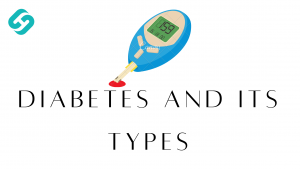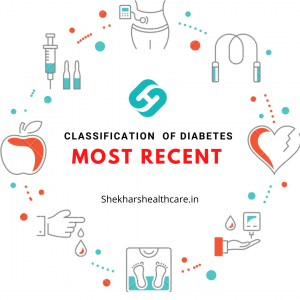Today, Diabetes is the most common Endocrinopathy on the planet. To discuss about this disorder is to take a dive into an ocean that’s Vast & deep.
But, as promised I’ll provide just the right dose of information. In this blog we will learn Diabetes- introduction, what it is & the main types of it.
Spoiler alert: Diabetes type 1.5 is a.k.a Flatbush diabetes.
Introduction
Diabetes is a broad spectrum disorder in the homeostasis of normal body. It is not just about the pancreas but can affect every system in the body. It is the most common non communicable disorder in the world today & is caused due to various risk factors.
What is Diabetes ?
It is a group of metabolic disorders that share a common phenotype of Hyperglycaemia (increased blood glucose levels).
Meaning there are certain metabolic disorders that result in increasing the blood glucose levels. Dr.Ralph DeFronzo discusses this as the Omnious octet of defronzo. There are 8 core inter-related metabolic defects implicated in the pathogenesis of Diabetes. They are as follows:
- Defect in the Pancreas leading to
- Decreased insulin secretion
- increased alpha cell activity ( increase in glucagon levels)
- Imbalance in the Liver causing increased Gluconeogenesis ( Glucose synthesis)
- Intestinal issues leading to increased glucose absorption.
- Disorders of the Adipose tissue resulting in increased lipolysis.
- Diseases in Kidney leading to increased reabsorption of glucose.
- Limitations in Muscles resulting in decreased glucose uptake.
- Flaw in the Brain causing Neurotransmitter dysfunction.
What are the Types of Diabetes ?
Conventionally Diabetes was categorised into Type 1 & Type 2. Not anymore. There are other types of Diabetes which we are going to be discussing.
- Diabetes type 1: This is a chronic condition in which the pancreas produces little or no insulin. It happens when your own immune system destroys beta cells in the pancreas that produce insulin. Type 1 is more commonly seen in Children & young adults.
- Diabetes Type 1.5 : This is a form of diabetes that has emerged with time & now is being considered as another type. This basically has two subtypes:-
- Ketosis Prone Diabetes (KPD): At the initial stages this presents as a Type 1 Diabetes & with time & treatment the exogenous insulin requirement decreases making it possible to treat the patient with simple Oral hypoglycaemic agents. Meaning the patient was a type 2 diabetic in the first place but presented as a Type 1. This type is more commonly seen in adolescents.
- Latent Autoimmune Diabetes in Adults (LADA): This type in the initial stages presents with the signs & symptoms of a type 2 diabetes but requires more & more exogenous insulin in the later stages. It’s Type 1 diabetes presenting as a type 2. More commonly seen in Adults.
- Type 2 Diabetes: It is a chronic metabolic disorder where the body cannot utilise the insulin efficiently, leading to increased blood sugar levels. This in turn stimulates the pancreas to produce more & more insulin until it can no longer keep up with the demand , eventually the insulin production also decreases. This type is the most common type & it occurs in adults of all economic classes.
- MODY (Maturity Onset Diabetes in Young): It is seen in Early adulthood (less that 25 yrs of age) . There is no Gender inequality. There are 7 subtypes of MODY 1,2,3,4,5,6,7. All these are Transcription factor defects except type 2 MODY which is due to an enzyme defect. There is no insulin resistance. It is well controlled with oral hypoglycaemic agents with less or no complications.
There are two more types of Diabetes which are Arbitrary & are not considered internationally. They are as follows:
5. Type 3 Diabetes : This type has 3 subtypes under it.
-
- Type 3 a: It is also known as Hybrid diabetes/double diabetes/brain diabetes. This type is commonly associated with Alzheimer’s dementia. In this type of diabetes there is some form of Acquired resistance to the glucose uptake by the brain cells.
- Type 3 c : This is called as Pancreatic diabetes. Here, the disorder is acquired due to the underlying pancreatic disease. It is more commonly seen in Lean, young(15-25 yrs) individuals. The chances of ketosis is very low in this type. Hence, it is also called as Lean,Young,Ketosis negative Diabetes. It has a very bad prognosis and the risk of developing complications as well as the risk of pancreatic cancer is very high.
- Type 3 d: Also know as Drug induced diabetes. It is caused due to intake of certain medications that are a risk factor to induce diabetes.
6.Type 4 Diabetes: It is seen in people who are more than 60 yrs of age, who develop Hyperglycaemia for the first time. This type neither show any insulin resistance nor any complications. Treatment with Oral Hypoglycaemic Agents has a good prognosis.
Summary.
Diabetes is a group of metabolic disorders causing increased blood glucose levels. There are 3 main types of Diabetes; Type 1 , 1.5, 2 & MODY . Of which Type 2 diabetes is the most common.
The types of Diabetes aforementioned in this blog have been updated. To get the most recent & newly proposed classification of Diabetes click here.




3 thoughts on “Diabetes & its types.”